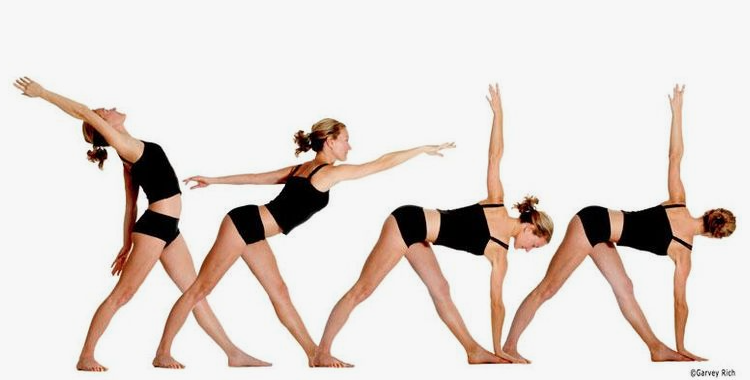Yoga for the abdomen: 10 poses that will help strengthen the muscles
yoga exercises for the lower abdomen
Yoga for the abdomen: 10 poses that will help strengthen the muscles. Anyone can do these exercises.
Holding certain asanas is excellent for strengthening the abdominal muscles: the rectus abdominis, located in the center, as well as the internal and external obliques on the sides of the body.
Of course, the poses won’t help you get a flat stomach or a six-pack. You need to have a low fat percentage for that, and yoga isn’t effective for weight loss. But holding the asanas will help make your stomach look more toned, improve your posture, and reduce the risk of back pain.
Do these exercises every day, for example, as morning exercises. Hold each position for about 30 seconds or eight breathing cycles – inhalations and exhalations.
1. Chaturanga dandasana – staff pose
Get into a push-up position. Press your hands into the floor and lower your shoulder blades so that your shoulders move away from your ears. Tilt your pelvis back, straighten your knees, and tighten your abs.
Bend your arms at the elbows and lower yourself until your shoulders are parallel to the floor. At the bottom, your forearms should be vertical. Make sure your shoulders are not pulled up to your ears, and look at the floor in front of you.
Stay in this position for as long as you can. Continue to control the position of your back: the lower back should remain neutral, without excessive arching.
If your arms aren’t up to the challenge, try a low plank instead.
Get into a forearm push-up position. Spread and lower your shoulder blades, twist your pelvis back as shown in the video. Hold the pose as long as you can maintain the correct body position.
2. Vasisthasana – Sage Pose
Get into a push-up position, then turn your body to the right, leaving your left palm and left foot on the floor .
Tighten your legs and lift your pelvis higher so that your body arches upward slightly. Point your free hand toward the ceiling, open your chest, and look at your hand.
Don’t sit on the shoulder of your supporting arm, lower both shoulder blades. Try not to fall forward or backward – your body should be in one plane, as if you were squeezed into a narrow gap between two walls.
When the time is up, switch sides from the push-up position and repeat the asana with the push-up position on the other arm.
3. Setu bandha sarvangasana – bridge pose
Lie on your back, stretch your arms along your body – your palms should be on the floor. Bend your knees and place your feet so that your fingers touch your heels.
Tighten your buttocks, lift your pelvis off the floor and lift it so that your body stretches from your knees to your shoulders in a smooth arc. Hold this position and imagine that you are pulling your tailbone toward your knees.
Make sure that the weight is distributed between the feet and shoulders – the neck should not be under strain. Stay in this position for 30 seconds, observing your breathing and not releasing the tension in your legs and body.
If you wish, you can deepen the pose by clasping your straight arms together, arching your upper back a little more and pulling your chest towards the wall behind your head.
Just make sure the weight stays on your shoulders. If you feel the strain on your neck, come out of the pose.
After completing the asana, lower your pelvis back, pull your knees to your chest and hug them with your arms.
Rock gently from side to side for a few seconds.
4. Anjaneyasana – Half Moon Pose
Place your feet twice as wide as your shoulders, turn to the right side and drop onto your left knee. Make sure your right shin is perpendicular to the floor. Press the instep of your left foot into the floor to relieve the knee.
Make sure both pelvic bones are at the same level and in the same plane. Push the pelvis forward and up, rotate the left thigh inward.
Inhale and raise your arms above your head, clasping your palms together. Lift your chest up and lengthen your spine from your tailbone to your neck. Imagine reaching the top of your head toward the ceiling.
At the end of the exercise, stand up, turn to the left and do the same with the other leg.
5. Navasana – boat pose
Sit on the mat, bend your knees. Straighten your shoulders and lower your shoulder blades. Keeping your back straight, lean your body back a little, and then lift your legs, bent at the knees.
Press your thighs together, stretch your spine from your tailbone to your neck. Stretch your straight arms forward. Hold this position for as long as you can. Try to hold it for at least 30 seconds.
To make the pose more challenging, you can straighten your legs at the knees. Just make sure your back remains straight.
6. Virabhadrasana – warrior pose I
Place your feet twice as wide as your shoulders . Turn your right foot to the right at a 90° angle and your left foot at a 45° angle. Turn your hips and shoulders to the right, making sure they are level.
Raise your straight arms above your head. You can join your palms, although this is not necessary.
Bend your right leg at the knee at a right angle, keep your left leg straight and tense. While holding the pose, rotate your left thigh inward, lower your shoulder blades, and pull your chest up.
Hold for the required time, then straighten your legs, turn back to the starting position and repeat the pose on the other side.
7. Adho Mukha Svanasana – Downward Facing Dog
Get on all fours, tuck your toes under, and lift your pelvis. Straighten your arms, back, and neck so they are in a straight line. Staying on your toes, straighten your knees and tighten the front of your thighs.
Bend your thoracic spine, keeping your lower back in a neutral position. If your flexibility allows, place your heels on the floor, if not, leave them suspended. Spread your shoulder blades, rotate your hips outward. Pull your stomach toward your legs, deepening the stretch.
Hold the pose for the required amount of time, then lower your pelvis, bend your knees and get back on all fours.
8. Urdhva Mukha Svanasana – Upward Facing Dog
Lie on the floor on your stomach. Straighten and join your legs, place your palms on either side of your chest. Lower your shoulders and pull them back.
Press your palms into the floor and lift your chest and stomach off the floor. Straighten your arms, lifting your pelvis and thighs off the surface. Distribute your weight between your palms and the backs of your feet.
Push your chest forward and up, lower your shoulders. Keep your neck straight, look forward. Do not relax the tension in your legs – imagine that you are spreading your feet apart, although they are not moving from the place.
9. Vrikshasana – tree pose
Stand up straight, put your feet together. Then lift your right leg, bend it at the knee and place your foot on the inside of the thigh of the other leg, turning your toes down.
Point your knee to the side, tighten your abs, and maintain your balance. Place your palms in front of your chest and, if you feel confident, raise your arms above your head. Then repeat the pose on the other leg.
10. Parivrtta Trikonasana – Inverted Triangle Pose

Place your feet twice as wide as your shoulders. Turn your right foot 90° to the right and your left foot 45° to the same side. Spread your arms out to the sides.
Keeping your back straight, bend over to your right leg. Place your left palm next to your right foot, turn your chest toward the wall behind you, point your right hand toward the ceiling and look at it. Stretch your spine, try to open your chest more, do not bend your legs.
If you are not flexible enough to do this pose, try doing it using a yoga block . Place it next to the foot of your front leg, bend over, and place your hand on the block. Then turn your chest toward the wall behind you and raise your free hand up.
As you inhale, lengthen your back, as you exhale, gently increase the twist. Do this for 8-10 breaths, then come out of the pose and repeat on the other side.

